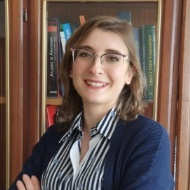Research and Application of Stem Cells in Regenerative Medicine
A special issue of Applied Sciences (ISSN 2076-3417). This special issue belongs to the section "Applied Biosciences and Bioengineering".
Deadline for manuscript submissions: closed (30 March 2024) | Viewed by 4930

Special Issue Editors
Interests: cardiac progenitor cells; myocardial infarction; cardiac regeneration; decellularizing methods; extracellular matrix
Interests: heart failure; myocardial infarction; cardiac function; chronic heart failure; cardiomyopathies; cardiovascular medicine; acute myocardial infarction; cardiac regenerative medicine
Special Issue Information
Dear Colleagues,
Regenerative medicine is a long-standing field of research focused on the repair or regeneration of damaged tissues or organs. It relies on a combination of approaches, including stem-cell therapy, tissue engineering, and cell reprogramming. Due to their ability to extensively proliferate and differentiate into different cell types, stem cells offer a promising strategy for the progress in regenerative medicine, and a platform to conceive new therapeutic tools through a multidisciplinary integration.
This Special Issue aims to be a common ground collecting and integrating the latest advances in the application of stem cells in regenerative medicine. We are interested in a wide range of papers, including novel cell types under investigation for cell therapy and improvements in existing cell availment. It also aims to acquaint the scientific community with tissue-repair processes and homeostasis, with cutting-edge approaches in research and application of stem-cell-based therapies, and with stem cell's interaction with the target macro- and micro-environment.
Dr. Immacolata Belviso
Dr. Anna Maria Sacco
Dr. Veronica Romano
Guest Editors
Manuscript Submission Information
Manuscripts should be submitted online at www.mdpi.com by registering and logging in to this website. Once you are registered, click here to go to the submission form. Manuscripts can be submitted until the deadline. All submissions that pass pre-check are peer-reviewed. Accepted papers will be published continuously in the journal (as soon as accepted) and will be listed together on the special issue website. Research articles, review articles as well as short communications are invited. For planned papers, a title and short abstract (about 100 words) can be sent to the Editorial Office for announcement on this website.
Submitted manuscripts should not have been published previously, nor be under consideration for publication elsewhere (except conference proceedings papers). All manuscripts are thoroughly refereed through a single-blind peer-review process. A guide for authors and other relevant information for submission of manuscripts is available on the Instructions for Authors page. Applied Sciences is an international peer-reviewed open access semimonthly journal published by MDPI.
Please visit the Instructions for Authors page before submitting a manuscript. The Article Processing Charge (APC) for publication in this open access journal is 2400 CHF (Swiss Francs). Submitted papers should be well formatted and use good English. Authors may use MDPI's English editing service prior to publication or during author revisions.
Keywords
- stem cells
- cell therapy
- tissue regeneration
- differentiation
- cell reprogramming
- iPSCs
- microenvironment
- extracellular matrix
- natural scaffolds
- tissue engineering
Benefits of Publishing in a Special Issue
- Ease of navigation: Grouping papers by topic helps scholars navigate broad scope journals more efficiently.
- Greater discoverability: Special Issues support the reach and impact of scientific research. Articles in Special Issues are more discoverable and cited more frequently.
- Expansion of research network: Special Issues facilitate connections among authors, fostering scientific collaborations.
- External promotion: Articles in Special Issues are often promoted through the journal's social media, increasing their visibility.
- e-Book format: Special Issues with more than 10 articles can be published as dedicated e-books, ensuring wide and rapid dissemination.
Further information on MDPI's Special Issue polices can be found here.







